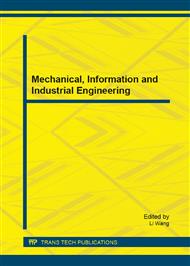p.676
p.680
p.684
p.688
p.692
p.696
p.702
p.706
p.714
Research on the Technique of Blind Recognition for Convolutional Code
Abstract:
As to the problem of blind recognition for convolutional code, the existing recognitory methods’ principle and process are summarized, and they are simulated and analyzed with Matlab. Four methods are introduced for the recognition of generation polynomials, and the comparison of these methods shows that the Euclidean algorithm works better at low BER, while the method based Walsh-Hadamard transform has a better accuracy when BER is as high as 10-2.
Info:
Periodical:
Pages:
692-695
Citation:
Online since:
March 2015
Authors:
Price:
Сopyright:
© 2015 Trans Tech Publications Ltd. All Rights Reserved
Share:
Citation:


